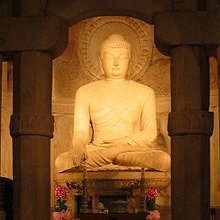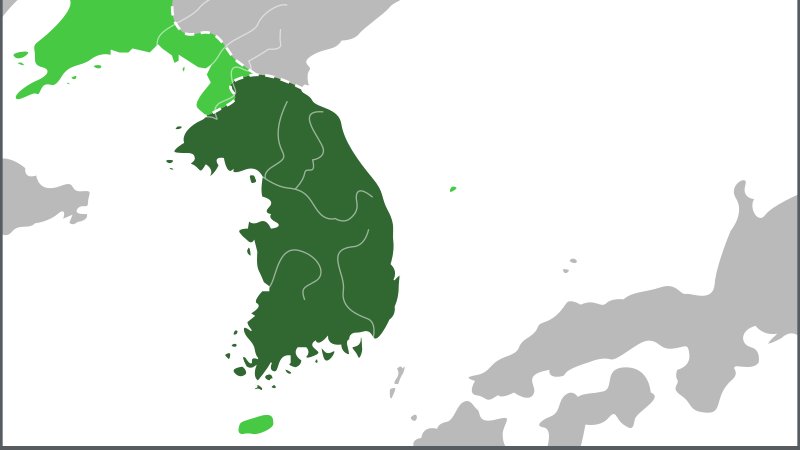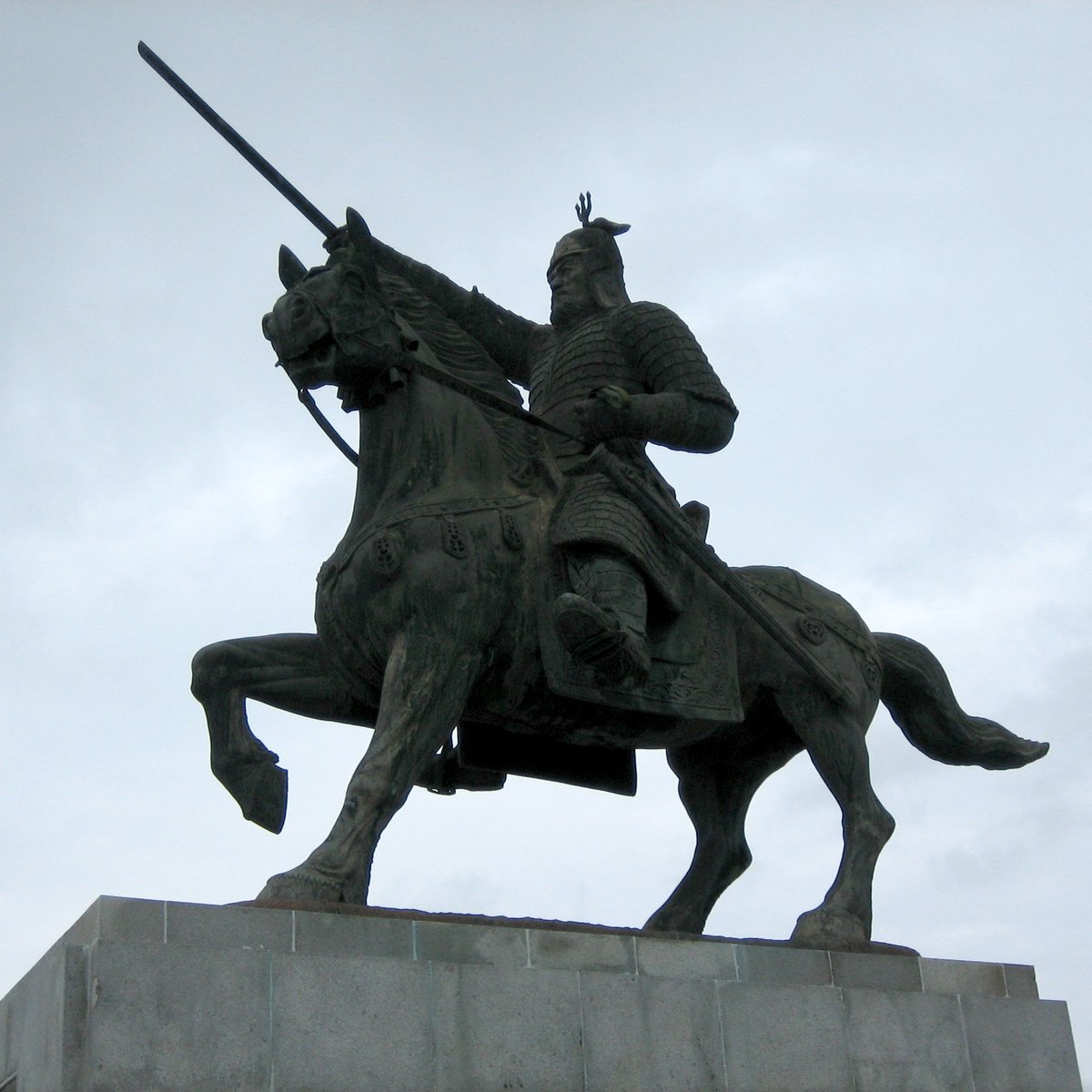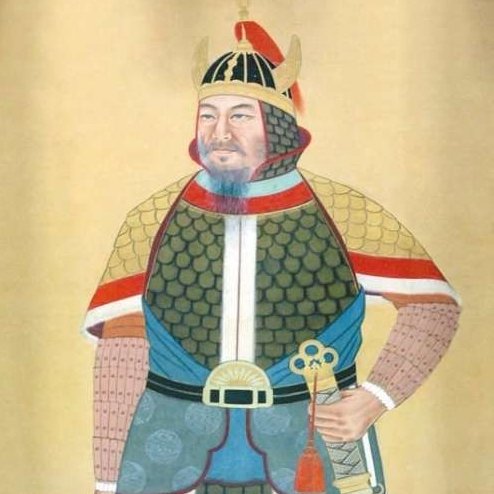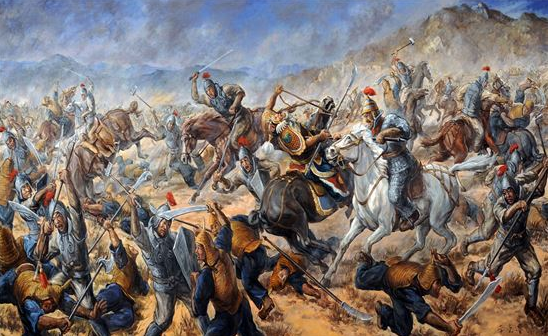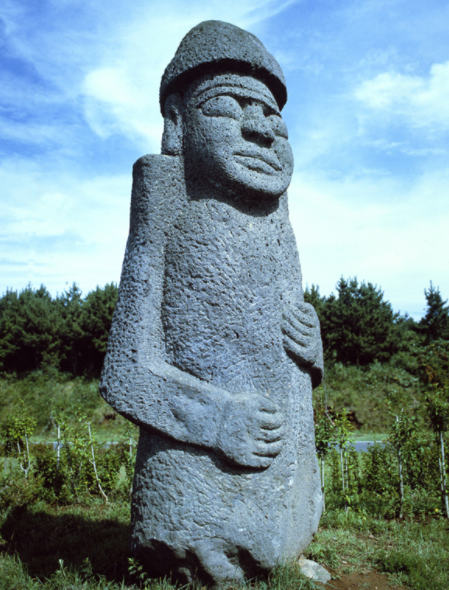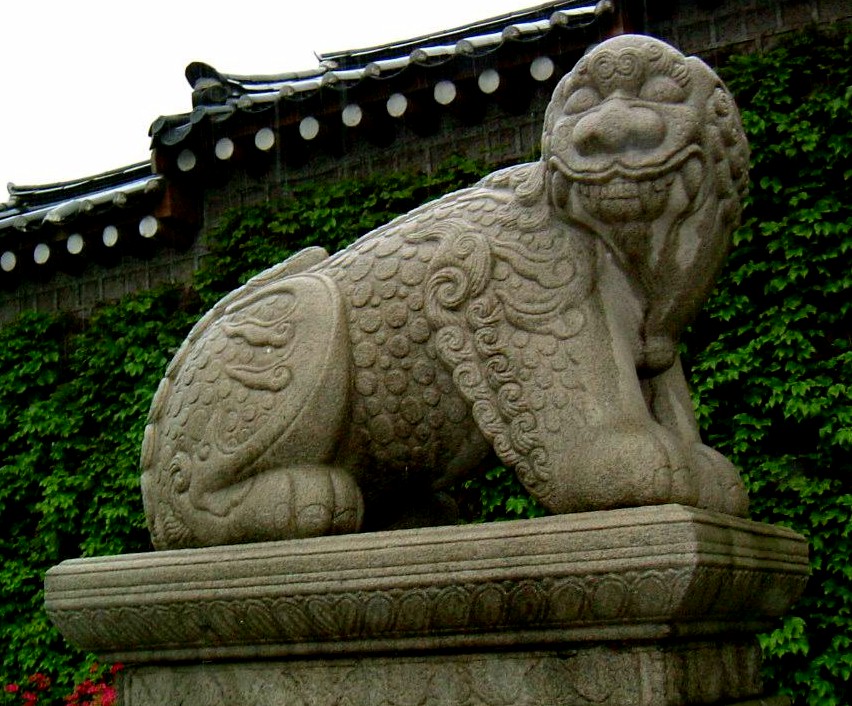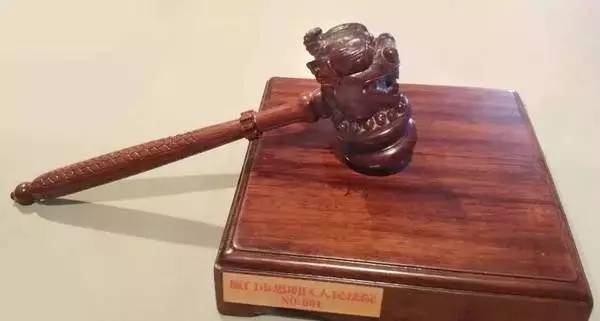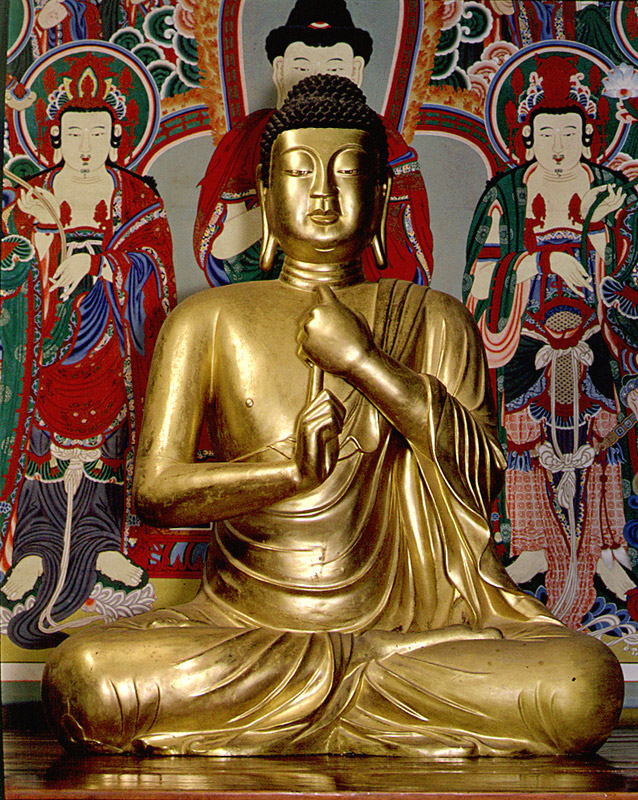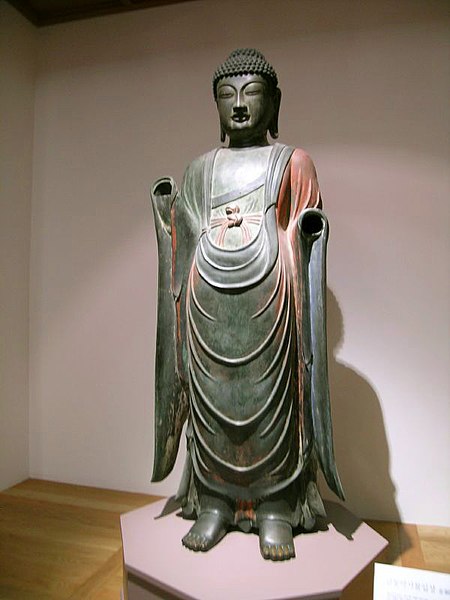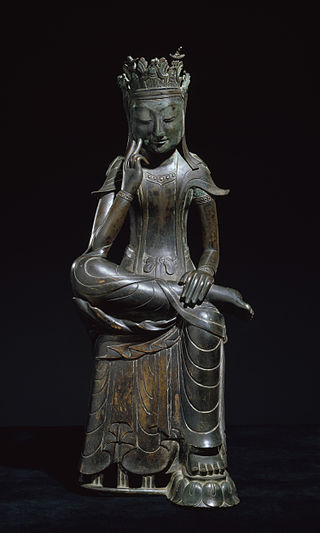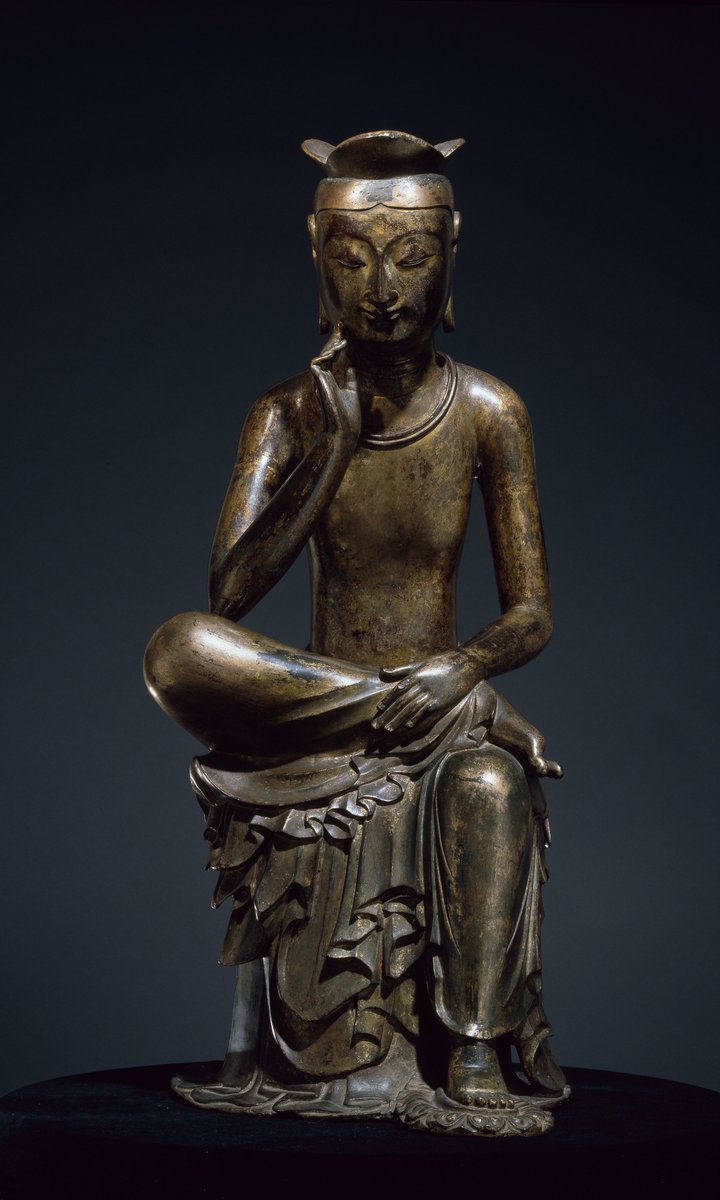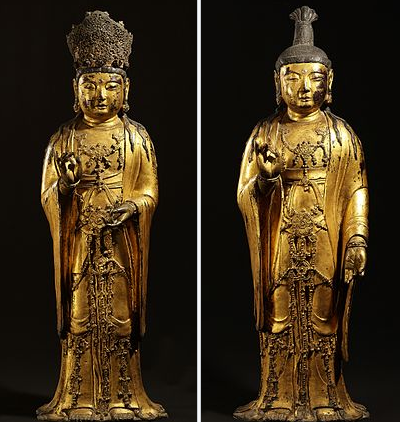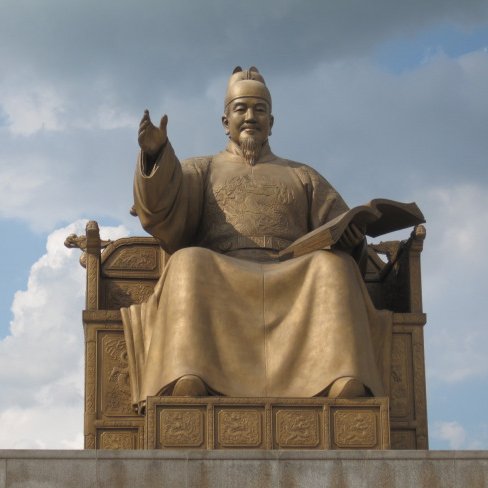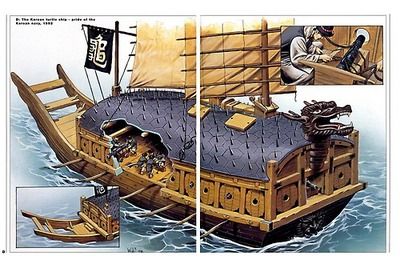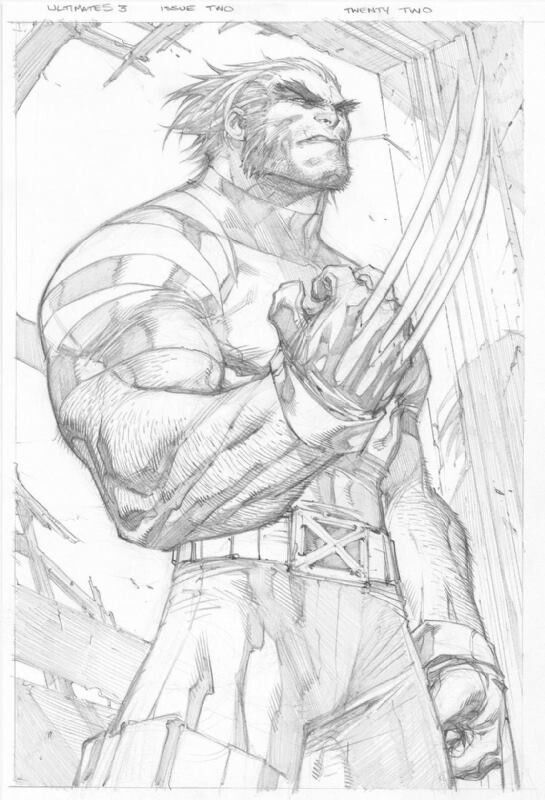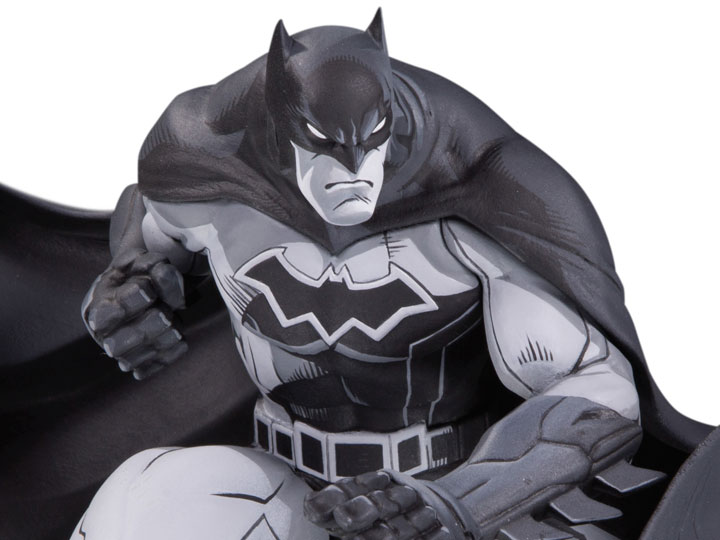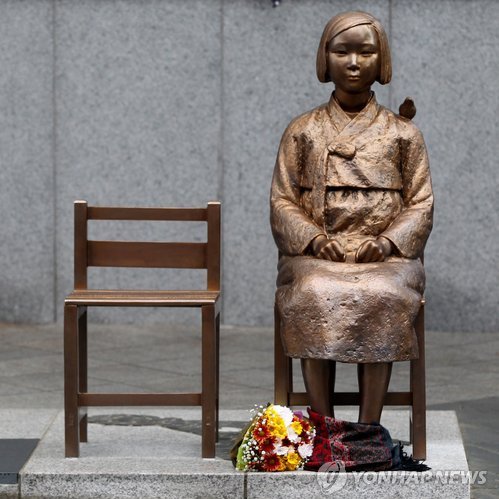The Seokguram buddha, 770 CE, is the greatest sculpture in Korean history and widely seen as one of the greatest buddha sculptures ever made. It& #39;s a masterpiece that turns white granite into skin and folded cloth, lit by reflected sunlight in a chamber that actually breathes.
"It is about 3.5 meters tall...the largest free-standing stone Buddha statue ever made in pre-modern Korea...constructed so that the rays of the rising sun fall on it and by reflection softly illuminate the holy figures surrounding him..."
http://www.korea.net/NewsFocus/Column/view?articleId=117475">https://www.korea.net/NewsFocus...
http://www.korea.net/NewsFocus/Column/view?articleId=117475">https://www.korea.net/NewsFocus...
The Seokguram (石窟庵) was built in the late Silla kingdom, 668-935, arguably the first unified Korean state—unified by King Munmu (文武王), who also cast the great Tang forces of China from Korea by famously defeating them at the Battle of Maeso in 675, thanks to his general.
That general was the famous Kim Won-sul, son of General Kim Yu-sin (below). Yu-sin is remembered as maybe the greatest swordsman in Korean history.
A clever man who used kites to communicate across channels with his troops on islands, he was also a cruel man who, after his son
A clever man who used kites to communicate across channels with his troops on islands, he was also a cruel man who, after his son
Won-sul lost a battle against the Tang, was so ashamed that he asked King Munmu to kill his son. He also once slit his own horse& #39;s throat for taking him to a brothel, because he had promised his mother that he wouldn& #39;t go to one anymore.
King Munmu spared Yu-sin& #39;s son, Won-sul, who went into hiding until his father died, later returned to war, fought the Tang with suicidal rage, drove them from Korea and then withdrew to the darkness of the mountains, never to see his hometown Gyeongju again.
But if you go to Gyeongju today, you can hike the easy trail up Mount Toham, see the Seokguram itself tucked into the grotto, which was built in Won-sul& #39;s day, and which gazes out over the pines at the distant sea, its eyes perfectly fixed on King Munmu& #39;s underwater tomb.
Anyway, I& #39;m rambling. The Seokguram buddha& #39;s status as the great sculpture of Korea is fairly undisputed. But this got me thinking...what would be No. 2? What& #39;s the second-best Korean statue/sculpture of all time?
Maybe the dol hareubang (stone grandfathers) of Jeju Island. Phallic, basalt gods of fertility that ward off demons and are possibly symbols of shaman mushroom culture.
Or the haetae (해태, 獬豸xiezhi), an innately just being that worked as a detective of sorts in the court of Emperor Shun, sensing the wicked and ramming them with its horns. Below, we see it engraved on a Chinese judge& #39;s gravel. In Korea, it was named symbol of Seoul in 2009.
There& #39;s no shortage of choices. Korean buddhist sculpture alone is quite rich. The Seokguram is the highest-ranked sculpture on the National Treasure list, after which you get the three gilt-bronze buddhas, all Silla pieces, starting with the seated Vairocana and Amitabha.
You may also know Vairocana as Siddhartha, the symbol of sunyata (emptiness).
And that hand gesture Amitabha is doing, that& #39;s the bodhyangi mudra, which means wisdom.
Other things to notice are the blocky heads and round shoulders, stylistic footprints of the prior Baekje era.
And that hand gesture Amitabha is doing, that& #39;s the bodhyangi mudra, which means wisdom.
Other things to notice are the blocky heads and round shoulders, stylistic footprints of the prior Baekje era.
Baekje was one of the states unified into Silla by King Munmu, btw. Next on that list is the 3rd great gilt-bronze buddha, the standing Bhaisajyaguru, the buddha of healing and medicine (but in a metaphorical sense, as in, healing you from the sickness of spiritual suffering).
Then we have the pensive Maitreya buddhas, 6th century BCE. Pensive buddhas, which possibly originated in Korea, were thought to be popular given that Maitreya, future buddha of this world, offered a hopeful message during the tumultuous Three Kingdoms period.
The Three Kingdoms period, 57 BCE-668 CE, refers to Goguryeo, the aforementioned Baekje and Silla. This was the period right before Munmu unified Korea, back when when Silla and Tang were allies, so you get a lot of Tang influence in sculpture but I won& #39;t go into that.
After Silla, the next major kingdom was Goryeo (origin of "Korea"), which saw Buddhism flourish in Korea, the development of high-quality celadon, creation of the world& #39;s greatest Buddhist collection of scripture, the Tripitaka Koreana. Here, two Goryeo bodhisattva figures.
But for me, none of this would rank No. 2, so I& #39;m jumping over a LOT of history to the next dynasty, Joseon, and two of the most famous statues in Korea today, both in Gwanghwamun Plaza, Seoul. One is King Sejong, credited most famously with inventing hangul (though unlikely).
And the other is of Admiral Yi Sun-sin, who famously fought off the Japanese using, among other things, his famous turtle ships (거북선 geobukseon), so named because their shells made them near-impervious to attack.
Nevermind that, though. I& #39;m a big fan of the Maitreya buddhas, but Yi Sun-sin almost gets my vote for No. 2. I& #39;ve always liked the weight of its visual aesthetic, his columnal torso, the impossibly large sword, all of it. Kinda sorta reminds me of Joe Madureira& #39;s work.
Plus, as with any statue, the story it tells matters as much as the artistry that tells it, and Yi Sun-sin has a legendary one. Vaguely echoing Won-sul& #39;s story, he was betrayed, cast out, came back, redeemed in glorious battle, became an everlasting hero, you get the idea.
But because story matters, for me, there& #39;s a more obvious choice—Statue of a Girl (소녀상), a comfort woman seated like a buddha with her hands on her lap. Hard to think of a more searing story, or one with greater weight in Korean society today.

 Read on Twitter
Read on Twitter